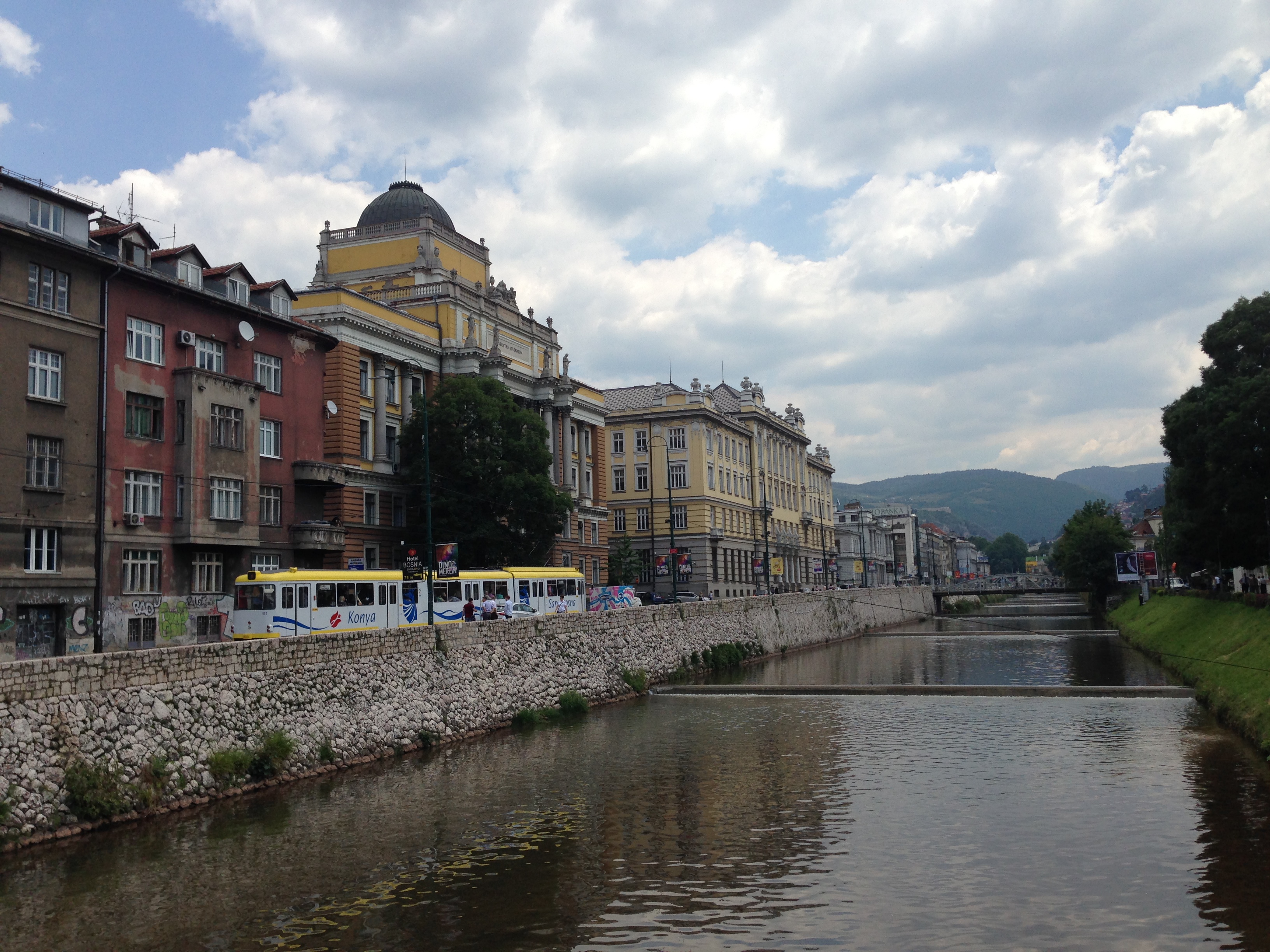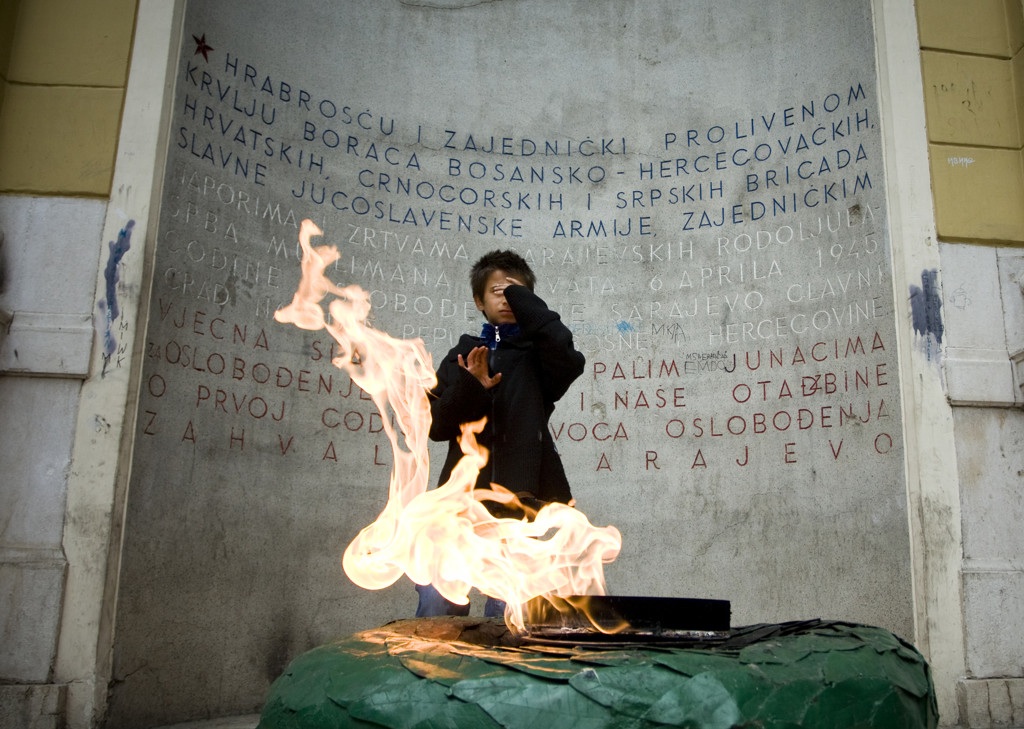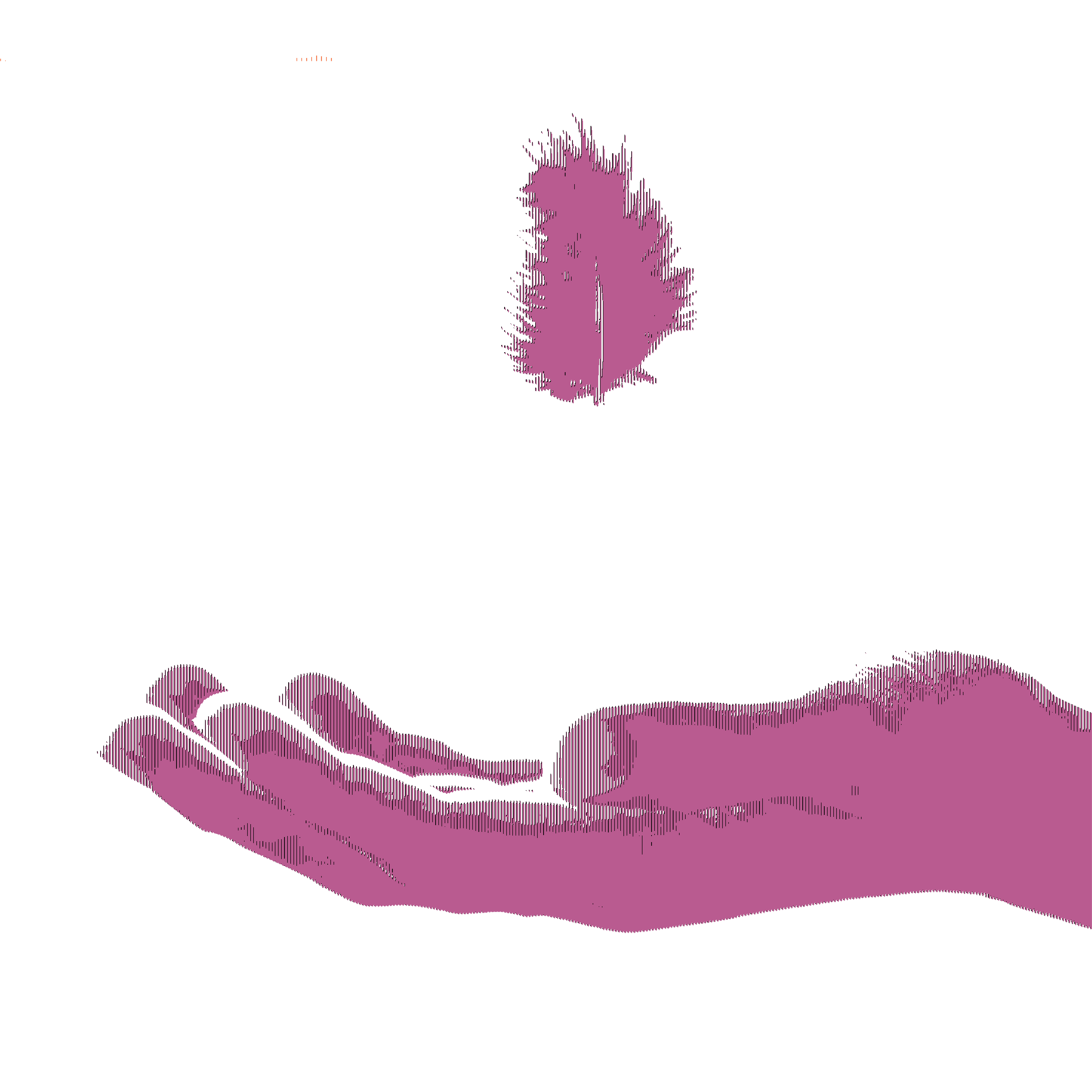
Early one morning in July, while hiking through the mountains of eastern Bosnia, I came upon a warehouse that was partially hidden by a clutch of beech trees. The long, flat concrete edifice was stippled with bullet holes, and across the front were a number of bluish posters, each with an airbrushed portrait of Vladimir Putin as well as a tagline in Cyrillic lettering: eastern alternative. I was walking with Ethan Putterman, an offbeat, white-haired professor who was born in Los Angeles and teaches Rousseau at the National University of Singapore. As we peered through a gate that hung in front of the entrance, Putterman said to me, "Do you know what this is?"
I had met Putterman only a few hours earlier, on the trail of the annual peace march that retraces, in reverse, the route taken by thousands of Bosnians who fled the town of Srebrenica during the Bosnian War. That morning, the third of the march, we had set out from the village of Pobudje with several thousand people. When we reached Krainovici, a scattering of homes that was too small to register on a map, Putterman and I had followed the path down a thicketed descent and ended up in the yard of a pale stucco house. The family who lived there served us coffee in plastic cups. After we rejoined the trail, picking a course through the blue-green hills, whose gentle, sinuous lines had gone bleary in the midsummer heat, we found that we'd lost sight of the march.
A wrong turn had delivered us to Kravica, and to the warehouse — where, Putterman told me, more than a thousand Bosniak (Muslim) men had been murdered in the summer of 1995. When Bosnia and Herzegovina declared independence from Yugoslavia, in 1992, an amorphous three-fronted war broke out among the new country's Bosniaks, Serbs, and Croats. Starting in the spring of that year, as many as 50,000 Bosniaks sought refuge in and around Srebrenica, an alpine town of placid houses and boxlike socialist buildings that the United Nations established as a safe area in 1993. Despite the U.N.'s presence, the armed forces of the Bosnian Serbs, which were supported from Belgrade by Slobodan Miloševic, laid siege to Srebrenica for three years. They overtook the starved, suffocated town on July 11, 1995, and two days later transported some 1,300 captured Bosniaks to the warehouse in Kravica. Once the warehouse was full, the Serbs opened fire, including with rocket-propelled grenades, and executed the men throughout the night.
The posters we saw on the front of the warehouse were a plea to Putin to block a proposed U.N. resolution that would formally acknowledge that the mass killings at Kravica and around Srebrenica had constituted genocide. Evidently the appeal had been successful; two days earlier, Russia had vetoed the resolution. While Putterman and I were taking pictures of the structure — he with his iPad, I with my phone — a police officer in a navy-blue uniform appeared through the trees. He shouted at us, pointed unhappily at Putterman's iPad, and waved us off in the direction we'd been heading before. After a few minutes of walking more quickly than we tried to let on, Putterman said, "Don't turn around, but he's following us."
It wasn't long before a police cruiser drove up from behind us and cut off our path. The officer checked our passports and asked to see the iPad. Though Putterman swiped carefully away from the photos and video he'd just taken, the policeman opened the back door of his car and indicated that we should get in. He drove us to a crossroads, left us in his airless car while he had a long conversation with his chief, and finally dropped us off at the bottom of a hill. When another car sped toward us, Putterman and I ducked into a cornfield; we decided it was best to take a taxi to Potocari, a hamlet a few miles away. The peace march was due to arrive there later that afternoon.
On July 11, 1995, the day that Srebrenica fell, some 25,000 Bosniaks fled to Potocari, where a detachment of U.N. troops from the Netherlands was stationed in an old battery factory. The mission of the Dutch battalion was to protect the civilians in the Srebrenica enclave, but the peacekeepers denied entry to many of the refugees who arrived at the compound. Those who were allowed inside were soon turned over to the Serbs. Ratko Mladic, the Serb military chief, entered Srebrenica virtually unopposed, and over the next seven days his forces murdered more than 8,000 Bosniaks, nearly all of them men and boys, in the Kravica warehouse and in fields and farms around the region. (Mladic was arrested in 2011 and extradited to The Hague, where he is on trial for genocide and crimes against humanity.)
Eight thousand is an ungraspable number, but the boundless plane of tombstones — white marble obelisks inscribed with Arabic epitaphs — that today curves up the hillside of Potocari gives some sense of the magnitude of the crime. This year, 136 fresh graves were dug for victims whose bodies had been discovered since the 2014 commemoration. (In many instances, the Serbs exhumed and reburied their victims to hide evidence of the killings.) One of them was for a man named Becir Velic, from the town of Cerska, just outside Srebrenica. His grave was marked 1939–1995. On the morning after the peace march arrived in Potocari, twenty years to the day after the fall of Srebrenica, I watched the men of his family kneel around a hole in the earth and lower the casket. They folded themselves over in prayer, while the women, their heads covered with white scarves, stood behind the men and cried.
At the battery factory, Land Rovers pulled up and disgorged the designated VIPs for the day's commemoration ceremony: the French ambassador and the Dutch foreign minister, the deputy secretary-general of the United Nations, and, finally, Madeleine Albright and Bill Clinton. When the prime minister of Serbia, Aleksandar Vucic, arrived from Belgrade, the press shoved cameras in his face. Vucic and Clinton shook hands. The dignitaries gave speeches that followed a predictable pattern — expressions of sympathy and regret followed by exhortations to future togetherness — and made a brief cavalcade through the cemetery, where they laid flowers at a monument, pausing for the pack of cameras that tailed them. As Vucic passed among the gravestones, protesters threw rocks and plastic bottles at him, which some Serbs would later describe, somewhat cynically, as an assassination attempt.
Read the rest of Zerofsky's piece in Harper's, here.

Education Resource
Bosnia Prepares for First Post-War Census
Last fall, Bosnians were poised to participate in their first census since the ethnic war of the...

Education Resource
Meet the Journalist: Elisabeth Zerofsky
Elisabeth Zerofsky talks about her work in Sarajevo, focusing on the Nasa Stranka political party...




